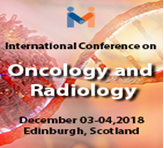EDP Protocol For Metastatic Inoperable Pheochromocytoma: A Case Report
Introduction: Pheochromocytoma and Paraganglioma (PPGLs) are rare neuroendocrine tumors which are known for their excessive catecholamines secretion and their variable clinical presentation. The majority of PPGLs are benign. As such, therapeutic options for the treatment of metastatic pheochromocytoma are limited, especially when complete respectability is impossible. Moreover, the acceptable chemotherapy regimen doesn’t affect overall survival of these patients. We report a case of a patient with neurofibromatosis type 1 and inoperable metastatic pheochromocytoma, treated with a chemotherapy protocol derived from the treatment of adrenocortical carcinoma and the partial response seen to this treatment.
Case presentation: 48-year-old caucasian woman with a history of neurofibromatosis type 1 presented with epigastric pain, dry mouth, and hypertension. Her blood work revealed elevated Aminotransferases levels (AST=53 U/L, ALT=91 U/L), Serum Alkaline Phosphatase (ALP) levels and Gamma-Glutamyl Transferase (GGT) levels (ALKP=188 U/L ,GGT=250 U/L) with high levels of lactate dehydrogenase (LDH= 797 U/L). An abdominal-pelvic ultrasonography demonstrated 8.9 cm X 8 cm X7 cm adrenal mass with possible liver metastases. Chest-abdomen-pelvis contrast enhanced Computed Tomography (CT) revealed space occupying lesion in the right adrenal, penetrating the inferior vena cava, and involving the right kidney, the left and right renal veins, and the aorta. Liver metastases were observed as well. Urine normetanephrine was 7173.5 mcg/24-hours, Normetanephrine/ creatinine ratio was 6676 and metanephrine/creatinine ratio was 225. A presumptive diagnosis of metastatic pheochromocytoma was made and subsequently validated in histopathology of a liver biopsy. Due to the proximity of the tumor to large vessels, debulking procedure couldn’t be performed. She received 6 cycles of chemotherapy protocol used for the treatment of ACC- etoposide, doxorubicin, and cisplatin (EDP regimen). Follow-up urine normetanephrine decreased to 390 mcg/24-hour and the patient's symptoms relieved. In a 68Ga-DOTATATE positron emission tomographic scan, both the right adrenal mass and the diffused liver metastases had shrunk. However, the patient's death was determined only four months after the diagnosis, due to internal bleeding.
Conclusions: To the best of our knowledge, this is the first reported case of metastatic pheochromocytoma that showed a partial response to ACC chemotherapy regimen. This case raises the possibility that other chemotherapy regimens then CVD, merit further investigation in the setting of metastatic pheochromocytoma.
 Spanish
Spanish  Chinese
Chinese  Russian
Russian  German
German  French
French  Japanese
Japanese  Portuguese
Portuguese  Hindi
Hindi 



